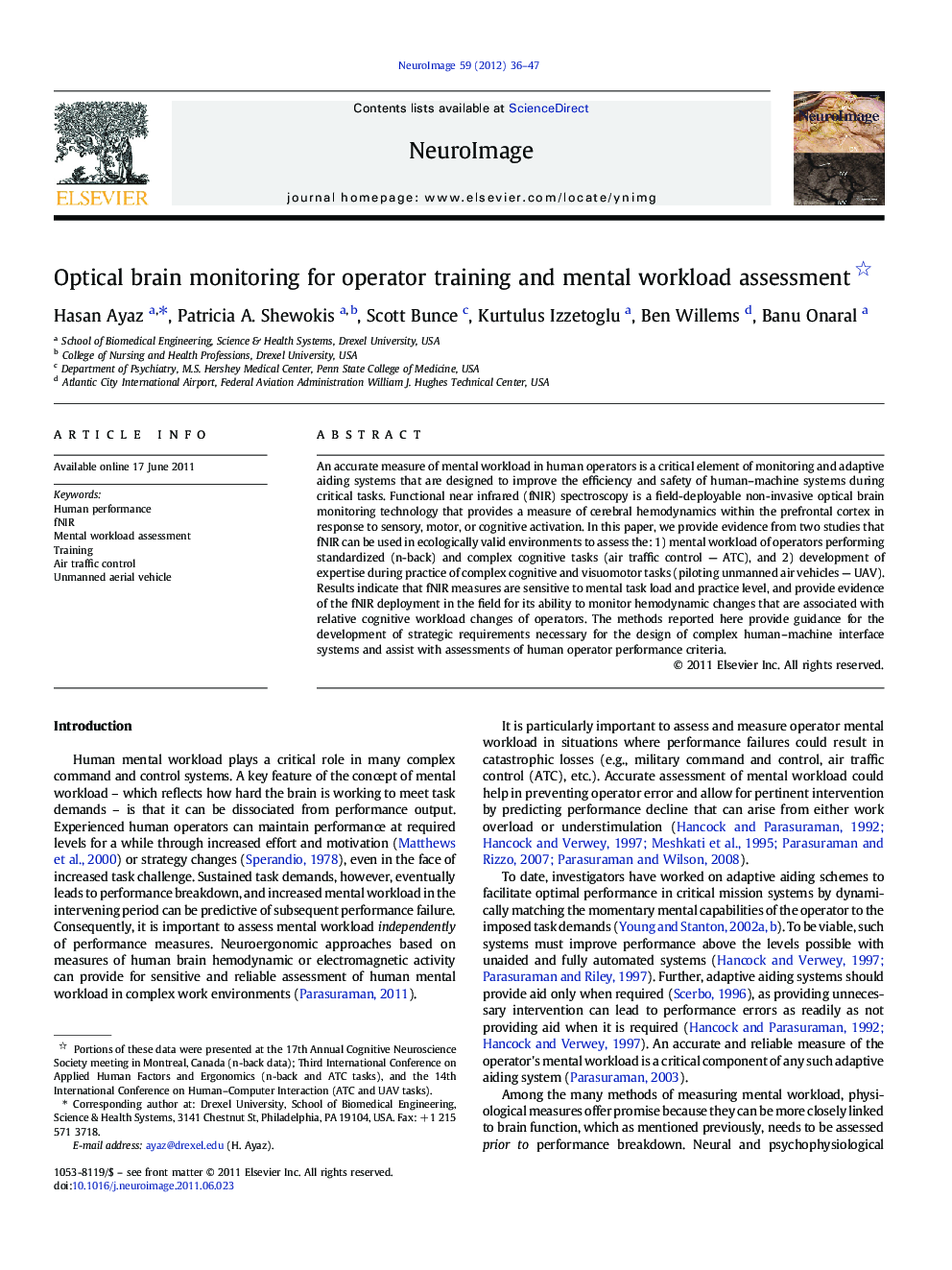| Article ID | Journal | Published Year | Pages | File Type |
|---|---|---|---|---|
| 6032981 | NeuroImage | 2012 | 12 Pages |
An accurate measure of mental workload in human operators is a critical element of monitoring and adaptive aiding systems that are designed to improve the efficiency and safety of human-machine systems during critical tasks. Functional near infrared (fNIR) spectroscopy is a field-deployable non-invasive optical brain monitoring technology that provides a measure of cerebral hemodynamics within the prefrontal cortex in response to sensory, motor, or cognitive activation. In this paper, we provide evidence from two studies that fNIR can be used in ecologically valid environments to assess the: 1) mental workload of operators performing standardized (n-back) and complex cognitive tasks (air traffic control - ATC), and 2) development of expertise during practice of complex cognitive and visuomotor tasks (piloting unmanned air vehicles - UAV). Results indicate that fNIR measures are sensitive to mental task load and practice level, and provide evidence of the fNIR deployment in the field for its ability to monitor hemodynamic changes that are associated with relative cognitive workload changes of operators. The methods reported here provide guidance for the development of strategic requirements necessary for the design of complex human-machine interface systems and assist with assessments of human operator performance criteria.
Research highlights⺠fNIR was used to assess mental workload of professionals and training of students. ⺠Changes in blood oxygenation in left DLPFC increased with higher cognitive workload. ⺠As novice students transitioned from beginner to advanced, HbT in left DLPFC reduced. ⺠fNIR can be used in designing and developing complex human-machine interface systems.
